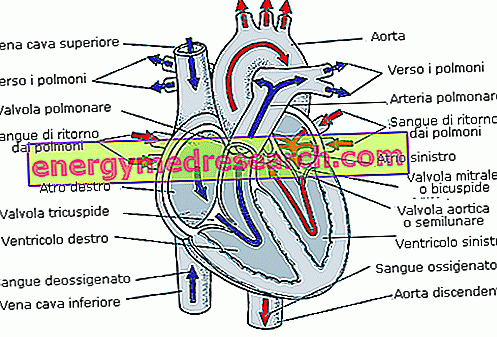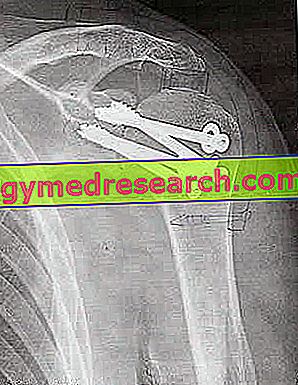Lipoproteins (or lipoprotids) are macromolecules deriving from the combination of a protein with lipids of various kinds: cholesterol, cholesterol esters, phospholipids and triglycerides. The fatty substances, insoluble in a watery environment, can in fact be transported into the blood stream only if they are linked to specific lipoproteins. The following table shows their main features:
| Lipoproteins * | chylomicrons | VLDL | LDL | HDL |
| Density (g / ml) | 0.93 | 0.95-1.006 | 1019-1063 | 1063-1210 |
| Diameter Å * | 800-5000 | 300-800 | 216 | 74-100 |
Composition: protein% lipid% | <2 98 | 8 ninety two | 22 78 | 50 50 |
| Lipid major | Triglycerides | Triglycerides | Cholesterol | Cholesterol |
| Main function | Transport of exogenous triglycerides (taken with food) | Transport of endogenous triglycerides (synthesized by the body) | Transport of cholesterol to peripheral tissues | Cholesterol transport from peripheral liver tissues |
| Origin | Intestine | Liver | VLDL metabolism | Intestine Liver |

Lipoprotein functions
The best known lipoproteins are those of the plasma, deputed to the transport of lipids from the intestine to the liver and from the liver to the various tissues. | |
 | KILOMYCHRONES: lipoproteins consisting of a lipid heart (formed by triglycerides, phospholipids, cholesterol and fat-soluble vitamins), surrounded by protein molecules. This sort of mantle, thanks to the water solubility conferred by the proteins, increases the solubility degree of the chylomicrone in the aqueous medium. These macromolecules are produced in enterocytes (intestinal cells), from which they escape to enter the lymphatic circulation and, subsequently, into the bloodstream. After distributing their lipid content to the various tissues, the chylomicrons are conveyed to the liver, which then destroys their protein shell and recycles the lipid residues contained within them. VLDL (very low density lipoproteins) are synthesized by hepatocytes. They transport triglycerides from the liver (where they were synthesized, for example, from glucose) to other tissues (especially the adipose and muscular tissues). LDL (low density lipoprotein) derives from VLDL, due to the progressive depletion of their triglyceride content. They are loaded with cholesterol that transport and distribute to peripheral tissues. HDL (high density lipoprotein) is secreted into the blood from the liver and intestines. They are therefore deputed to the transport of cholesterol from the peripheral tissues to the liver (they carry out the so-called reverse cholesterol transport). |


Watch the video
X Watch the video on youtube



